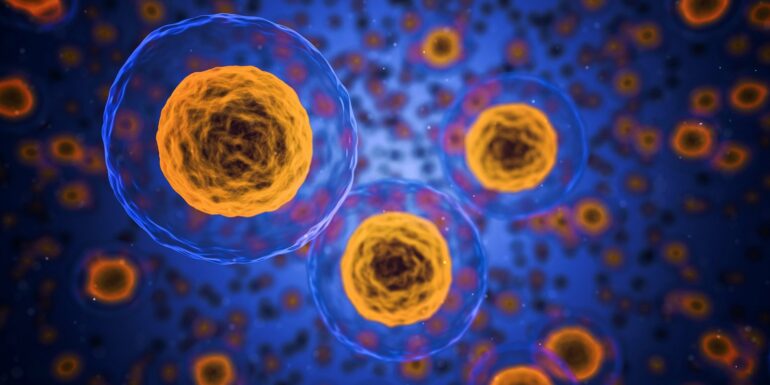To understand how cells function, scientists study how their different components—from single molecules to multiple organelles—work together. Using traditional structural biology techniques, they can look at individual molecules, zooming in to individual atoms. In most cases, however, this approach provides only static snapshots of molecules. To infer how molecular structures behave in their cellular environment, scientists instead use cryo-electron tomography. In contrast with other structural approaches, however, this technique does not allow them to observe the atomic details.
Observing the secret life of molecules at the atomic level in their natural surrounding has thus seemed impossible, until now.
EMBL Hamburg’s Kosinski Group, the Beck Laboratory at the Max Planck Institute of Biophysics, and the Mahamid group, along with the Advanced Light Microscopy Facility at EMBL Heidelberg have closed this technological gap. Using molecular modeling and cryo-electron tomography, they visualized how a massive molecular machine called the nuclear pore complex (NPC) moves inside cells.
The NPC is a doughnut-shaped structure located in the membrane of the cell’s nucleus, containing a thousand proteins. It functions as a checkpoint that controls which proteins enter and leave the nucleus, and thus plays a critical role in many fundamental cellular processes. Many viruses, such as HIV and the influenza virus, hijack the NPC to enter the nucleus.
Combining mathematical models and tomography data, the scientists were able to create a video that shows how the NPC dilates and contracts in living cells in response to changes in the cellular surroundings. Resulting insights into this molecular behavior might help in developing new antivirals in the future.
Observing structural changes in such a large complex at the atomic level would have been impossible without Assembline, a software specially developed by the Kosinski Group to tackle this challenge. Assembline allows structural modeling by combining data obtained from various experimental techniques. It connects the functionalities of several existing programs in one tool, which makes it a “Swiss army knife” for studying molecular complexes. The software has already proven useful for studying other big complexes, such as the ESX-5 complex involved in tuberculosis. It is also open source and freely available for use by the scientific community.
This work is one example of EMBL’s approach to studying life in context across scales, which is the essence of the upcoming EMBL Programme Molecules to Ecosystems. EMBL is also dedicated to open science, and the release of Assembline contributes to the EMBL’s history of making scientific resources freely accessible to the scientific community.
More information:
Christian E. Zimmerli et al, Nuclear pores dilate and constrict in cellulo, Science (2021). DOI: 10.1126/science.abd9776
Vasileios Rantos et al, Integrative structural modeling of macromolecular complexes using Assembline, Nature Protocols (2021). DOI: 10.1038/s41596-021-00640-z
Provided by
European Molecular Biology Laboratory
Citation:
Observing the secret life of molecules inside the cell (2021, December 21)



